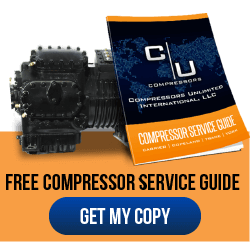Many companies struggle with energy costs, finding lighting systems and HVAC to be the two biggest contributors. In specialized commercial and industrial workplaces, other large-scale systems also draw significant power. Inefficient systems add substantial overhead in a year.
At the same time, small changes can have a big impact. The sooner you discover a way to cut costs by even 1%, the sooner that will be magnified into a major savings. Luckily, you don’t need to tear down your existing HVAC or completely change your workflow to get the results you want.
Let’s review some of the approaches businesses have taken:
1. Install New Air Filters
The first tip is by far the easiest: Install new air filters or clean your existing filters, depending on what kind you use. This is typically done once a quarter, but it could be necessary to do it as frequently as every week for industrial sites, and monthly for high-traffic commercial buildings open to the public.
Indoor air has the potential to be many times more polluted than outdoor air. Air filters are critical in preventing pollutants and pathogens from getting trapped in ductwork and recirculating in the indoor environment. Inhibited airflow means your HVAC works harder and costs more money.
The narrower your ducts, the more essential your filters are – they help prevent clogs, too.
2. Maintain Your HVAC
The rest of your HVAC matters just as highly, and the commercial compressor is the key component.
The compressor is widely known as the heart of the HVAC system since it does all the mechanical labor that makes refrigerant gas available to the rest. When other components don’t work as they should, the compressor pushes even harder. But when the compressor fails, so does the entire HVAC system.
HVAC maintenance is broken down into weekly, monthly, quarterly, and annual tasks. While a thorough maintenance program touches on all parts of the system, none is more important than the compressor.
Depending on the make and model of your compressor and its underlying architecture, it may present different maintenance needs. Many commercial/ industrial compressors are the semi-hermetic style, leaving the unit open to inspection while protecting it from the environment. This makes it easier to service.
A compressor remanufacturing company can advise you on maintenance best practices. When a compressor becomes inefficient, a remanufactured commercial compressor is a fast and reliable way to get the equipment you need at a fraction of the price set by OEM wholesalers.
3. Implement Energy Management
With wireless technology and the Internet of Things, today’s smart building management systems introduce capabilities that were unthinkable just a few years back. You may already have a smart thermostat, which uses highly sensitive sensors to calibrate the temperature carefully.
A dedicated energy management system is supported by similar sensors. Based on the settings you select, it can adjust your HVAC settings, lights, and more based on the room’s occupancy level and intended use. That delivers a level of granular control that would be impossible for any one person to oversee.
Results vary, but it’s not out of the ordinary to yield a 5% reduction in energy spending.
4. Run Energy Audits
What are your biggest energy hogs? In lots of situations, it’s difficult to know for sure. You may be able to compare energy spending year-over-year, but you cannot be certain what drives increased spending unless you start with an energy audit.
Energy audits are conducted by third-party inspectors with expertise in energy management. They may find a variety of issues, like wiring problems, damage to the building’s envelope, warped windows or insufficient window treatments, and so on. Some of these can come as a surprise to building occupants.
While each finding in an energy audit might not produce much savings alone, together, they can prove to be decisive. Plus, addressing the root causes of energy inefficiency cuts down the likelihood of more serious problems later, saving on maintenance and raising property value.
5. Adopt Energy-Saving Practices
Although an energy audit is the gold standard, you can start saving with a simple building walkthrough.
Small habits add up. For example, because airflow is such a critical factor in HVAC efficiency, propping an exterior door open can have an outsized impact on power usage. If you have narrow ducts or are in a historic space where ducts can’t be refitted, they should be checked inch by inch for clogs.
Industrial workplaces should shift energy-intensive processes to off-peak hours to avoid paying punitive rates, where possible. You may be able to negotiate special rates in advance by contacting your utility company.
There’s no silver bullet for energy savings, but different approaches can add up. Start where you can find the biggest wins – like the compressor – then work your way through the building for the best results.












